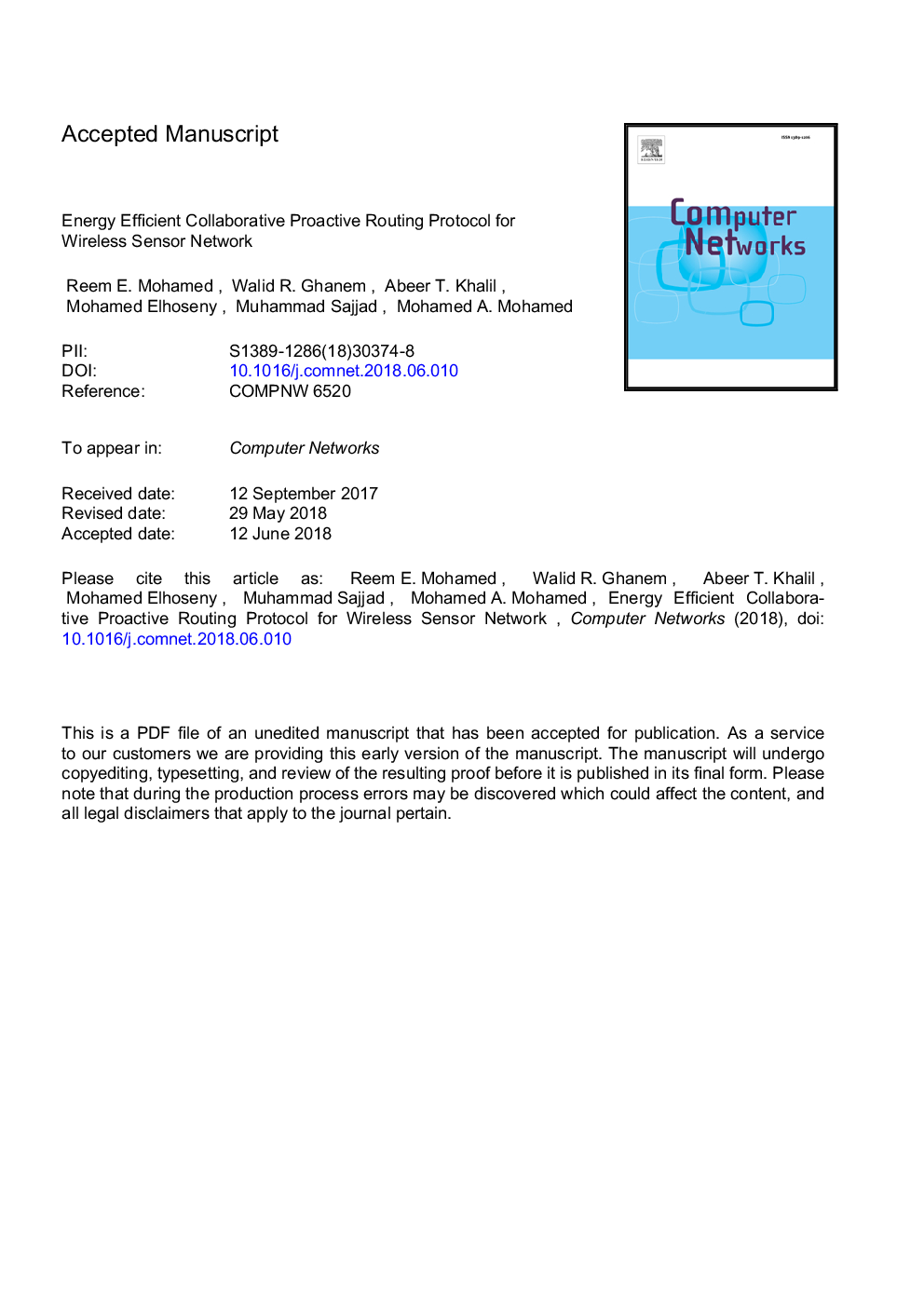| Article ID | Journal | Published Year | Pages | File Type |
|---|---|---|---|---|
| 6882615 | Computer Networks | 2018 | 26 Pages |
Abstract
A Wireless Sensor Network (WSN) is a group of tiny power-constrained nodes that cover a vast region of interest (ROI), sense and communicate it to the Base Station (BS). The main challenge encountered in WSNs is how to cover the ROI perfectly and transmit the monitored data to the BS for the longest possible time. Although many energy-efficient routing protocols for periodic monitoring applications were recently introduced, the dynamic nature and complex environments of WSN applications make building such protocols a considerable challenge. In this paper, the node degree of the Degree Constrained Tree (DCT) in homogeneous proactive WSN is studied analytically for the network with one BS that is outside the ROI. Since the node degree affects the network lifetime of these types of networks, the optimum node degree for minimum energy consumption in DCT is derived. Subsequently, the paper proposes a Collaborative Distributed Antenna (CDA) routing protocol that is based on distributed antenna theory to provide fair load distribution in terms of transmission energy. CDA is based on DCT with optimal node degree and is designed for periodic data monitoring in WSN applications. The experimental results prove our analysis to emphasize that using optimal node degree in DCT doubles its network lifetime compared to using other node degrees. Moreover, adding CDA to DCT with optimal node degree is proved to double the network stability period and reduce the ratio between instability period and the network lifetime to its half. It also shows 25% increase in network lifetime and minimum rate of node loss compared to its peers, such that the lifetime of half the nodes is preserved until few rounds before the end of network lifetime.
Related Topics
Physical Sciences and Engineering
Computer Science
Computer Networks and Communications
Authors
Reem E. Mohamed, Walid R. Ghanem, Abeer T. Khalil, Mohamed Elhoseny, Muhammad Sajjad, Mohamed A. Mohamed,
